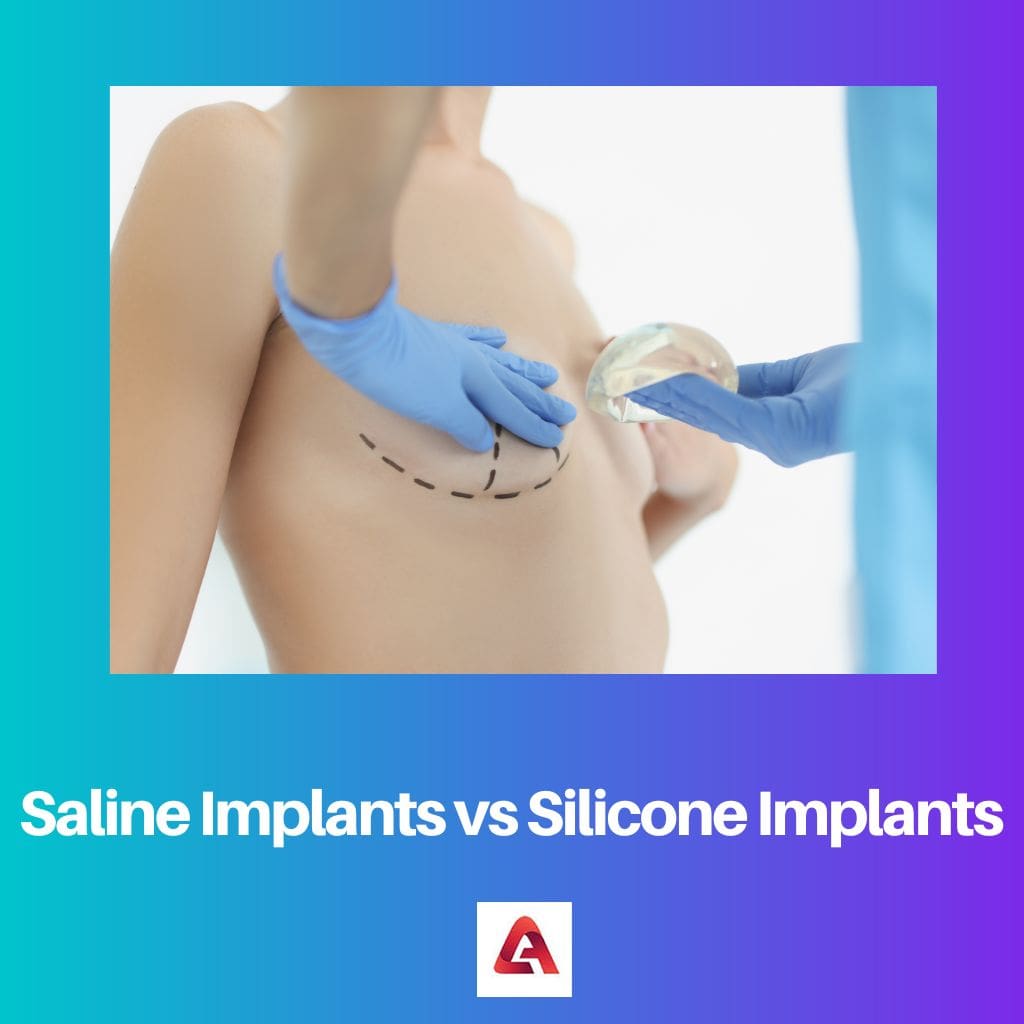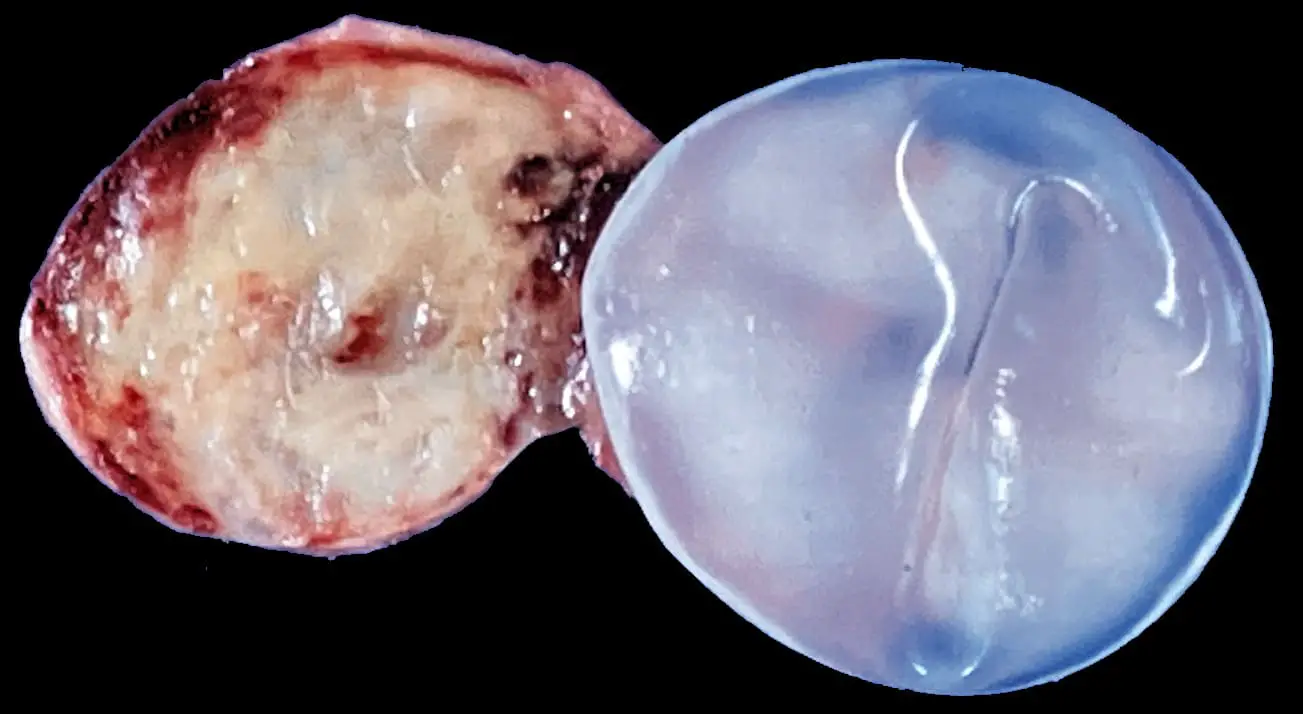Breast augmentation includes inserting a breast implant behind the breast or chest muscle, known as sub-glandular and subpectoral placement.
A breast implant is made of a shell that is made from silicone. They may be filled with either saline or silicone gel, creating various types of differences.
Key Takeaways
- Saline implants are filled with sterile salt water, while silicone implants are filled with a silicone gel.
- Saline implants can be adjusted after placement, while silicone implants cannot.
- Silicone implants look more natural than saline implants but may require more follow-up care to detect ruptures or leaks.
Saline Implants vs Silicone Implants
Saline is a breast implant with a silicone shell filled with sterile saltwater solution, allowing for slight adjustments to the size and shape of the breast. Silicone implants, are breast implants made of a silicone shell filled with silicone gel. It closely mimics the feel of natural breast tissue.

Saline implants have an outer shell that consists of silicone. This outer shell is then filled with sterile saltwater.
A patient needs to be a minimum of 18 years of age to get a saline implant as approved by the FDA. It is also safer in case of any ruptures or leaks.
On the other hand, silicone implants are completely made of silicone, including the outer shell and the inner filling. Silicone is a synthetic material and an inert polymer that feels kind of similar to human fat.
A patient needs to be a minimum of 22 years of age to get a silicone implant as approved by the FDA.
Comparison Table
| Parameters of Comparison | Saline Implants | Silicone Implants |
|---|---|---|
| Age | Minimum 18 years old | Minimum 22 years old |
| Cost | More affordable | Comparatively more costly |
| Chest Size | It is not the right choice if you have a small chest | A better option if you have a smaller chest |
| Rupture | It is safer and has no immediate danger. | It may cause pain and some physical changes but is unnoticeable. |
| Capsular Contraction | Lower chance | Higher chance |
What are Saline Implants?
A saline implant has a silicone outer shell that is inserted into the body while it is empty. It is then filled with sterile salt water to the desired volume to get the size the patient wants. There is minimal scarring with saline implants.
It has the same consistency as water which means they don’t feel that natural since they are firmer, but it is one of the more affordable options for breast implants.
The Food and Drug Administration requires you to be a minimum of 18 years of age to get a saline implant.
If you have a smaller chest, that means the skin is thinner. This may mean that a saline implant’s rippling or wrinkling can easily be seen or felt through the skin.
One of the advantages of saline is that it is adjustable even after the procedure is done with the help of a remote injection port. If you get a saline implant, it may appear rounder and fuller if compared to other implants, which may be pleasing to some patients.
Another advantage is that if they were to burst, the body would be able to absorb the saline and cause the implant to deflate without causing any serious side effects or health problems.
If it does rupture, you can easily notice it immediately and get reconstruction or get it removed.
What are Silicone Implants?
Silicone implants are made of silicone, meaning that both the outer shell and its filling are inert polymers. Silicone has no human allergies, reactions, or sensitivities, making it healthier.
According to the FDA, you need to be a minimum of 22 years of age to get a silicone implant. Silicone has been proven to be more viscous than saline.
Silicone has a similar feel to human fat, which means that it gives a more natural look and feel to breasts.
They can be of different sizes and shapes; some may be more firm or more cohesive than others. They have also known as “gummy bear” implants.
A silicone implant may feel more natural but poses a higher risk of ruptures. If a rupture does occur, the silicone gel will hold its shape and probably won’t invade any other areas.
A concern that arises with silicone is that the patient may not even know that the implant has ruptured unless it causes health issues.
According to the FDA, if a person has a silicone breast implant, they should get an MRI scan 3 years after their augmentation and every 2 years after that to check for any ruptures that may have occurred.

Main Differences Between Saline and Silicone Implants
- The minimum age for saline implants set by the Food and Drug Association is 18 years old, whereas for silicone implants, it is 22 years old.
- The cost of breast implants varies because of the surgeons and types of implants. Saline implants are more affordable, whereas silicone implants can cost more.
- If you are naturally thin-chested, then silicone implants are more suitable when compared to saline implants, as saline implants may be visible through the skin if rippling occurs.
- If the implants get rupture, saline will deflate, which might affect the physical looks, but it poses no immediate danger to your health because the body can absorb saline. On the other hand, silicone might leak if it gets ruptured, which can cause breast pain, thickening, and physical changes. Silicone implants are also more dangerous since you may not even notice they have been ruptured.
- Capsular contraction results in the thickening and hardening of the area near the implant and has an effect on its appearance. Saline implants have a low chance of a capsular contraction occurring, whereas silicone implants have a higher chance.




